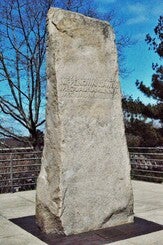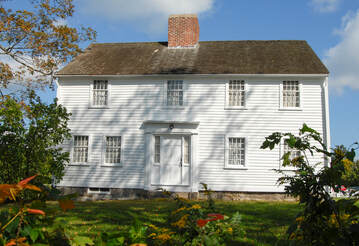
We acknowledge that the University of Rhode Island (URI) is located on the homelands of the Narragansett and Eastern Nehântick peoples, and acknowledge the legacy of displacement and violence of settler colonialism on which the institution is built.
The existence of the University of Rhode Island, and by extension the PATHS Lab, would not be possible without the theft of these traditional homelands. Indigenous people inhabited this area for thousands of years before European colonizers arrived. The Narragansett peoples’ oral tradition places a Narragansett village on or near campus, a fact that was supported by archaeological findings during the construction of the URI’s Plains parking lot (Bovy et al., 2021).
Further, URI is a land grant university. Land grant universities are intrinsically tied to the sale of ancestral American Indian land, sometimes far removed from the site of the university. The original funds that supported the construction of this University were gained through the sale of Kickapoo lands in Kansas, in an area now known as Leavenworth (Bovy et al., 2021). The murder and disenfranchisement of the Narragansett and Nehântick peoples created vast tracts of cheap land that a group of enslavers, known as the Narragansett Planters, then took advantage of (Bovy et al., 2021).

The PATHS Lab would like to further recognize the unpaid labor of enslaved individuals that made the formation of the University of Rhode Island and the state of Rhode Island possible.
Narragansett Country (later known as Washington County, now home to the University of Rhode Island), had the highest concentration of enslaved individuals in the Northern Territories for most of the 18th century (Clark-Pujara, 2016). South Kingstown was the center for slavery in Rhode Island, and Rhode Island was the center for slavery in New England (Bovy et al., 2016). Enslaved individuals in this area worked as cow herders, shepherds, and dairy farmers (Clark-Pujara, 2016). The Oliver Watson Farmhouse, visible from the PATHS Lab’s offices in the Chaffee building, was originally owned by a slaveholder named Nathaniel Niles. In 1775, Silas Niles II (Nathaniel Niles’ grandson) enslaved 10 Indigenous people and 6 individuals of African origin on the land that would later become the University (Bovy et al., 2016). While the original Niles house was destroyed in a fire (Rhode Island Historical Preservation Commission, 1984), remnants of the foundation can still be seen today. Further, it is hypothesized that the land under URI’s Ryan Center is the final resting place of individuals enslaved by the Niles family (Bovy et al., 2021).
We honor the sacrifice of both the land and labor of Indigenous and African Americans. We recognize that the construction and continuation of the University of Rhode Island would not be possible without this. As a research lab, we dedicate our work to supporting the mental health needs of American Indian, First Nations, and other minoritized communities. We vow to center the voices of those who have endured these historical traumas and collaborate with these communities in the spirit of truth and reconciliation. We pledge to work to honor Native land, African labor, and to celebrate the resilience of minoritized peoples amidst ongoing oppression.
References
- Bovy, K., DeCesare, C., Mather, R., & Spears, L. (2021). Walking through time: The 5,000-year history of the URI campus. 2021 Memorials and Commemoration Series, Kingston, RI, United States. https://www.youtube.com/watch?v=AbIeNJ-Bmmo&t=4605s
- Clark-Pujara, C. (2016). Dark Work: The Business of Slavery in Rhode Island. NYU Press.
- Rhode Island Historical Preservation Commission. (1984). State of Rhode Island and Providence Plantations preliminary survey report, Town of South Kingstown. Accessed July 7, 2022. https://preservation.ri.gov/sites/g/files/xkgbur406/files/pdfs_zips_downloads/survey_pdfs/south_kingstown.pdf
